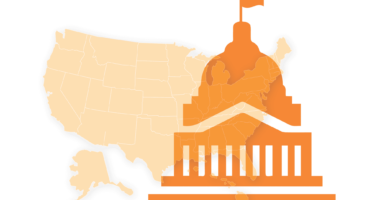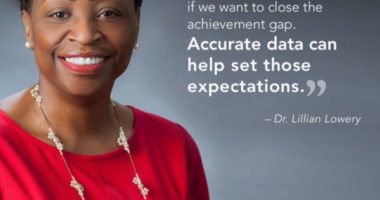Add It Up: Mathematics in the U.S. does not compute
(Washington, DC) – A report released today by The Education Trust marshals findings from several large-scale studies of mathematics achievement - both national and international - to argue that improving mathematics achievement in the United States will require a coordinated K-16 approach involving both K-12 and higher education.
The report provides one of the most comprehensive looks to date at what happens to American students as they progress through the system and how their mathematics experiences compare to those of their peers in other countries.
The report, Add It Up: Mathematics Education in the U.S. Does Not Compute, finds that while mathematics achievement is up at every grade level, these gains are largely attributable to growth at the elementary level.
Mathematics knowledge learned in high school actually declined. Moreover, while the country overall has been making improvements, African American and Latino youth did not share equally in the gains, causing the achievement gap to mostly widen - all of this at a time when mathematics is becoming ever more important internationally.
The report also documents a startling 50% decline in mathematics degrees since 1971 and a shrinking supply of math teachers, adding up to a deeply troubling situation for mathematics education in our country. Indeed, the pool of mathematics majors is so small that even if all of them became mathematics teachers, it is unclear whether we would have enough to meet projected needs.
“You dont have to look at the research very long to see that falling short in one area relates to failure in others,” said Kati Haycock, director of The Education Trust and author of the report. “The short supply of mathematically proficient teachers hampers our efforts to dramatically raise student achievement, which in turn, produces fewer college students interested in entering math fields, leading to a smaller supply of math majors, especially math majors who want to become teachers. Its a dangerous downward spiral.”
The report includes brand new data on the percent of secondary math classes taught in the U.S. by teachers lacking a major or a minor in math, including the first ever national look at middle grades mathematics teachers.
The data show that nationally, 61% of all middle grades students are taught mathematics by teachers who did not themselves study enough mathematics to earn even a minor in math, math ed or related fields. Rates are even higher in schools serving low-income and minority students.
“It doesn’t take a math major to complete this math problem. If present patterns continue, there’s literally no way to raise math achievement to where it needs to be at every level and for all students. In order for our K-12 students to make continued and increased gains in mathematics, higher education needs to produce graduates with a deep and flexible knowledge of math,” Haycock noted. “And yet higher education’s output of math graduates is falling precipitously. This is why action is needed at both levels, and why we’ve provided some concrete images of schools, colleges, even whole states that are using new strategies and getting better results.”
Highlights of the Report include:
Math achievement in the U.S. improving, but not enough: only about 1 in 4 American elementary and middle school students is proficient in math. Only 1 in 6 is proficient at the high school level.
- While there was significant improvement in the 1990s, the gains were not big enough. For example, in 2000 only 26% of all 4th graders perform at or above the proficient level and at the 8th grade level, only 27% perform at or above the proficient level.
And its worse for low-income and minority students.
- More than half of all African American and Latino 4th graders in the U.S. perform below the basic level. By grade 12, more than half of Latino students and nearly 70% of African American students perform below basic.
Achievement gains in U.S. outpaced by gains in other countries.
- While American 4th graders scored above the international average, our 8th graders slid below the average and behind 20 other countries in math, according to the latest Third International Mathematics and Science Study (TIMSS). By 12th grade, American students slipped even further and outscored only 2 other countries. Even our top students scored below the international average and outscored no other countries.
- Additionally, students in several nations who score high on TIMSS had far fewer of the resources at home that Americans typically credit for producing high achievement (e.g., well-educated parents, books in the home, computers). Nevertheless, they managed to perform significantly higher than their American counterparts (see Chart 8, p.7).
What is happening in mathematics classes?
- When looking internationally, American lessons are taught at a much lower level than other advanced countries including Japan and Germany. Researchers studying this phenomenon have found that while the U.S. covers more mathematics topics than other countries, it covers them in less depth.
- Since the 1980s the enrollment of high school students in more advanced classes has risen. Too few minority students, however, are enrolled in these advanced classes. For example, while roughly two thirds of Whites and Asians are enrolled in Algebra II, only about half of Latinos, African Americans, and Native Americans are so enrolled.
- At the collegiate level, nearly one in four college freshmen are taking high school or remedial math. Even at highly selective institutions, about 20% of total student enrollments in math are at the remedial or pre-calculus level.
Who is teaching math?
- Students in other countries are far less likely to be taught by a teacher who did not major in mathematics. Across the countries participating in TIMSS, an average of 71% of 8th grade math teachers were math majors in college; in the US, only 41% had majored in mathematics.
Whats to be done?
According to Haycock, “If we just wanted to prove our case that our two systems of education higher education and K-12 are so deeply intertwined that you cant change one without also changing the way the other does business, we would simply stop here. But we want to stimulate concerted K-16 action by providing not just a rundown of the problem, but also some concrete images of how we might solve it.” (See pp. 19-20 for more information on what some states, districts and university systems are doing.)
Some Actions For Change (see pp 20-22 for full list):
- Bring higher education and K-12 together.
- State and local leaders must start engaging mathematicians of every sort and bring them together.
- Get the data for your state or community out and talked about.
- Provide assistance for current teachers.
- Refocus curriculum, assessment, and professional development on the most important standards and provide every math teacher with a guide that maps their textbook against those standards.
- Help teachers reach greater consistency in the teaching of certain courses by developing some combination of common mid-stream and end-of course tests, and common “benchmark” assignments.
- Increase the numbers of students studying mathematics at ALL levels.
- K-12
- Make the college prep mathematics curriculum the default for all students.
- Help students before they fail.
- Raise the certifications requirements for middle school math tteachers to include more substantial knowledge of mathematics.
- Mine new sources to attract individuals knowledgeable in mathematics into the classroom.
- Higher Education
- Set goals for increased production of Baccalaureate degrees in mathematics.
- Engage mathematics faculties in strategizing about how to produce more and better teachers of mathematics.
- K-12



